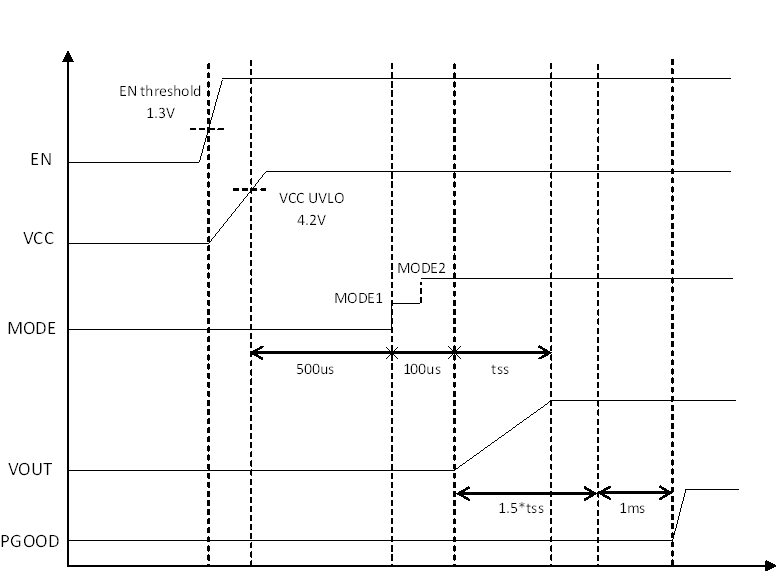JAJSH37A August 2019 – August 2019 TPS56C230
PRODUCTION DATA.
- 1 特長
- 2 アプリケーション
- 3 概要
- 4 改訂履歴
- 5 概要(続き)
- 6 Pin Configuration and Functions
- 7 Specifications
- 8 Detailed Description
- 9 Application and Implementation
- 10Power Supply Recommendations
- 11Layout
- 12デバイスおよびドキュメントのサポート
- 13メカニカル、パッケージ、および注文情報
パッケージ・オプション
メカニカル・データ(パッケージ|ピン)
- RJE|20
サーマルパッド・メカニカル・データ
- RJE|20
発注情報
8.4.4 Mode Selection
The device reads the voltage on the MODE pin during start-up and latches onto one of the MODE options listed below in Table 1 . The voltage on the MODE pin recommended to be set by connecting this pin to the center tap of a resistor divider connected between VCC and AGND. A guideline for the top resistor (RM_H) and the bottom resistor (RM_L) as 1% resistors is shown in Table 1. It is recommended to choose the resistor to set the voltage at around 5%*VCC for Eco-mode or 15%*VCC for FCCM. It is important that the voltage for the MODE pin is derived from the VCC rail only since internally this voltage is referenced to detect the MODE option, and not to leave the mode pin floating. The MODE pin setting can be reset only by a VIN power cycling or EN toggle.
Table 1. MODE Pin Resistor Settings
| Voltage on MODE | Recommended Resistor | LIGHT LOAD OPERATION | |
|---|---|---|---|
| RM_H(kΩ) | RM_L (kΩ) | ||
| (0~10%)*VCC | 330 | 15 | Eco-mode |
| (10%~20%)*VCC | 180 | 33 | FCCM |
Figure 17 below shows the typical start-up sequence of the device once the enable signal crosses the EN turn on threshold. After the voltage on VCC crosses the rising UVLO threshold it takes about 500us to read the first mode setting and approximately 100us from there to finish the last mode setting. The output voltage starts ramping after the mode reading is done.
 Figure 17. Power-Up Sequence
Figure 17. Power-Up Sequence